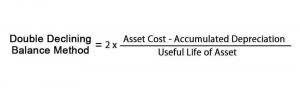Contra Account Definition, Types, and Example

A summary of all expenses is included in the income statement as deductions from the total revenue. Revenue minus expenses equals the total net profit of a company for a given period. It is important to understand the difference between “cost” and “expense” since they each have a distinct meaning in accounting. Cost is the monetary measure (cash) that has been given up in order to buy an asset.
What is Accumulated Depreciation?

These less-frequent contra accounts come into play when you need to account for changes in the outstanding liabilities for your business. For example, when your company borrows money, you would identify that debt in a Notes Payable account. Furthermore, if you subsequently pay off that debt early and capture a discount, the contra liability account — Discount Notes Payable — would record those savings. Another common contra liability account is a Discount on Bonds Payable account used by businesses that issue their own bonds. If you’re still using manual accounting systems, you’ll need to do a bit more work by recording your accumulated depreciation expense in your general ledger while also reporting it on your balance sheet as a contra asset account.
- For industries that rely on natural resources — mining, logging, oil, gas — depletion tracks the gradual exhaustion of the raw material in question, offsetting that loss in value against the initial appraisal of the land.
- Bills payable or notes payable is a liability that is created when a company borrows any specific amount of money.
- Simply hit Control + N under the Chart of Accounts or Edit, then click New (to create a new account).
- Another description of a contra expense account is an account that reduces or offsets the amounts reported in another general ledger expense account(s).
- A contra account is an account with a balance opposite the normal accounts in its category.
How Does a Contra Account Work in Accounting?
When considering all of the money currently owed to your business that’s recorded in your Accounts Receivable (A/R) line item as an existing asset, there’s a good chance that not all of those customers are going to pay you back in full. To compensate for those potential deadbeat customers, you can use a Bad Debts account to serve as a contra for your A/R. Consider a business that offers an early payment discount to its customers, cutting their invoiced total by 3% if they pay within 1 week of invoicing.
Contra liability accounts
And by comparing these contras against their corresponding parent accounts, you can better understand the actual value of the assets retained by your business. Because contra asset accounts are used so frequently, it’s worth spending a little bit more time on them here, including common subtypes. When a contra asset account is first recorded in a journal entry, the offset is to an expense.
Everything You Need To Master Financial Modeling
And when your business still has some of these outdated, unwanted, or unusable items in your inventory, you’ll want to offset the lost value of these assets in your general ledger and balance sheet. So rather than adjusting your Inventory account, you would update its contra account — Obsolete Inventory. A contra revenue represents any deductions or offsets that need to be removed from gross revenue to provide a clearer understanding of actual income — such as in the example just provided. These accounts will typically help track sales discounts, product returns, and allowances (e.g., a price reduction for a good with minor defects). A contra account is an asset account that is kept at either a negative or zero balance and is used on a balance sheet to offset the positive balance of a paired asset.

Difference Between Depreciation, Depletion, Amortization

Generally speaking, the use of contra accounts is to ensure their related accounts stay clean and to keep track of historical cost easier. The two most common contra accounts on a balance are accumulated depreciation and the allowance for doubtful debts. Accumulated depreciation tallies the depreciation to date of a fixed asset, such as a car or a building. While tracking contra asset accounts is cumbersome for bookkeepers and accounting clerks using manual accounting systems, if you’re using accounting software you’ll find that most of the heavy lifting is done for you. You may not need to use contra asset accounts right now, but as your business grows, using contra asset accounts will likely become a necessity. Accountants use contra accounts rather than reduce the value of the original account directly to keep financial accounting records clean.

Although the car is normally an asset because you can sell it for parts or use it for your business, when the car depreciates to a zero or negative balance, it is a contra asset on your balance sheet. When the original dollar amount is kept in the original account and a separate account is used for recording the deduction, the resulting financial information becomes more transparent and helpful for stakeholders. For example, a building is acquired for $20,000, that $20,000 is recorded on the general ledger while the depreciation of the building is recorded separately. If you’re using accounting software, you’ll be able to create contra accounts when setting up your chart of accounts. An expense account which is expected to have a credit balance instead of the typical debitbalance. The net amount – i.e. the difference between the account balance post-adjustment of the contra account balance – represents the book value shown on the balance sheet.
Contra equity
- When the amount recorded in the contra revenue accounts is subtracted from the amount of gross revenue, it equals the net revenue of a company.
- The dollar balance in the allowance for uncollectible accounts is the amount you don’t expect to collect, and this offsets the amount you report in accounts receivable.
- For example, when depreciating an asset, the accumulated depreciation account is used to reduce the book value of the asset while also keeping track of the total amount of depreciation that has been posted to date.
- The use of a contra account allows a company to report the original amount and also report a reduction so that the net amount will also be reported.
- Assume that a company uses a contra expense account to record the amounts that employees paid toward the company’s health insurance costs.
- Last, for contra revenue accounts there are sales discounts, sales allowances, or sales returns.
The articles and research support materials available on this site are educational and are not intended to be investment or tax advice. All such information is provided solely for convenience purposes only and all users thereof should be guided accordingly. A business called Show-Fleur offers private driving tours of local botanical gardens — all from the comfort of high-end limousines. For its day-to-day operations, the business maintains a fleet of 75 identical 2016 Ford Explorer limousines, each initially retailing at $150 thousand.

He has worked as an accountant and consultant for more than 25 years and has built financial models for all types of industries. He has been the CFO or controller of both small and medium sized companies and has run small businesses of his own. He has been a manager and an auditor with Deloitte, a big 4 accountancy firm, and holds a degree from Loughborough University. Upgrading to a paid membership contra expense account gives you access to our extensive collection of plug-and-play Templates designed to power your performance—as well as CFI’s full course catalog and accredited Certification Programs. Our team of reviewers are established professionals with years of experience in areas of personal finance and climate. Carbon Collective partners with financial and climate experts to ensure the accuracy of our content.


